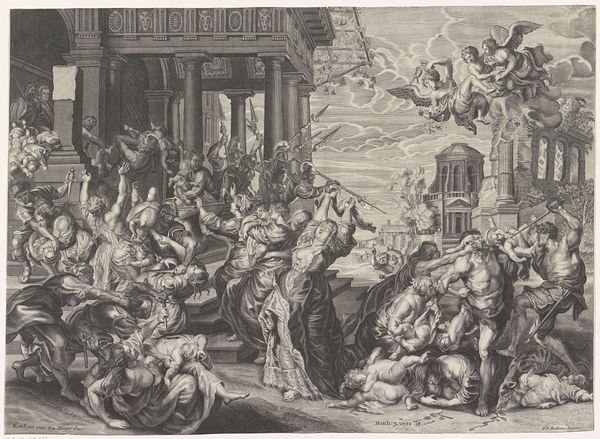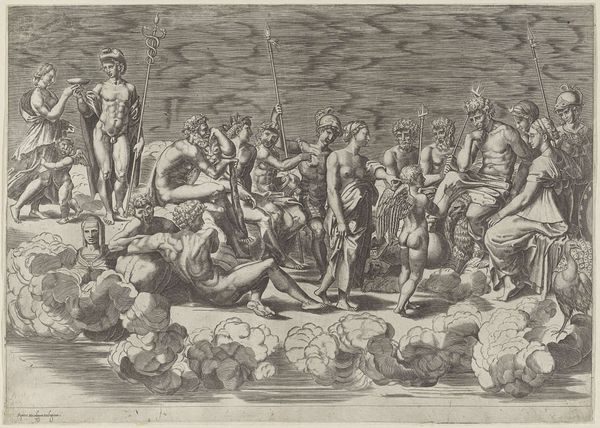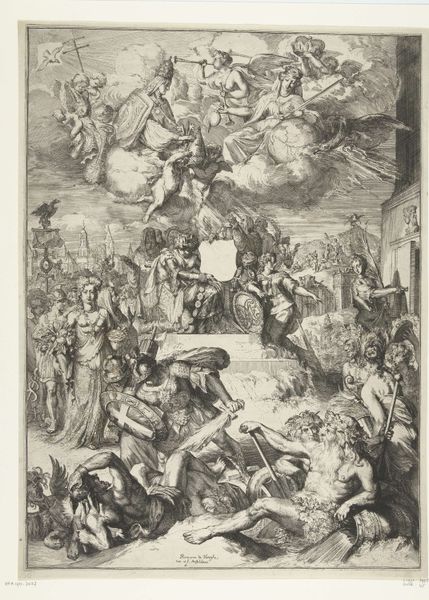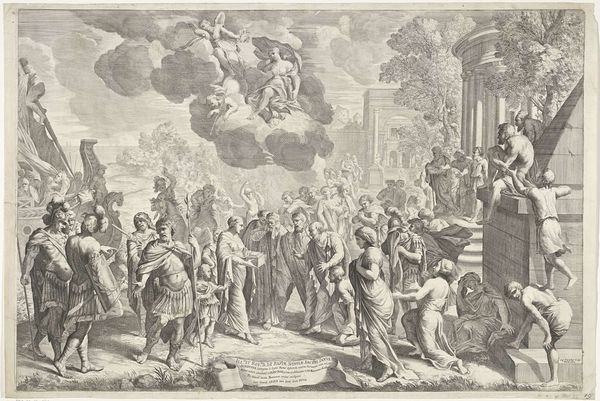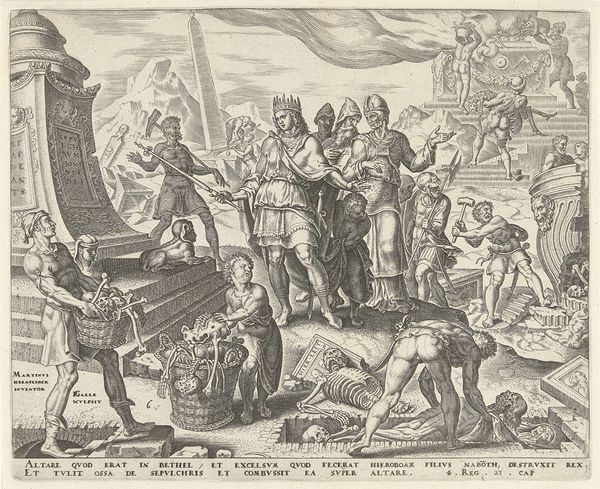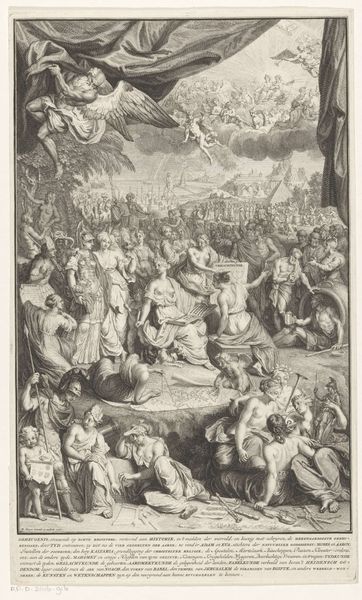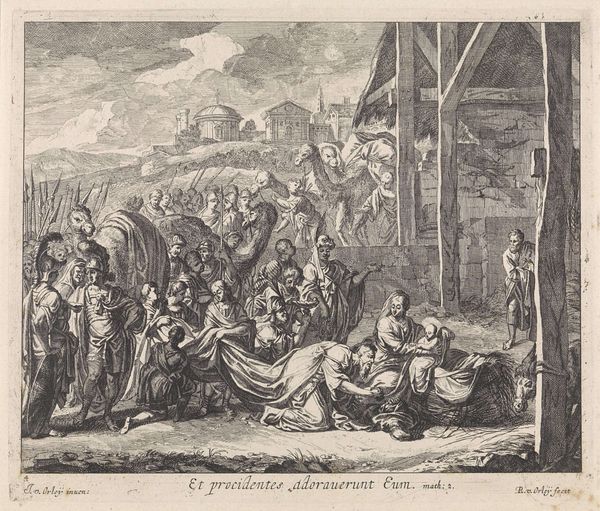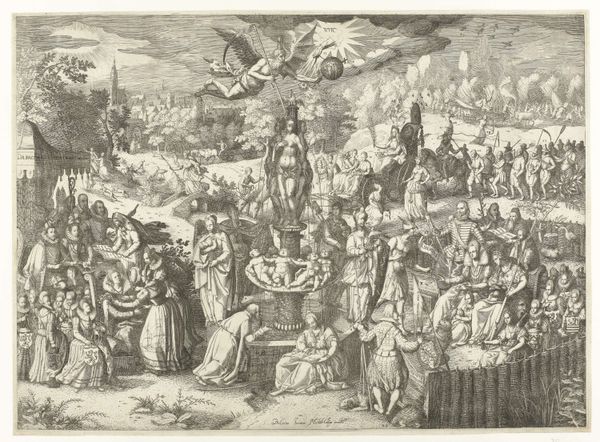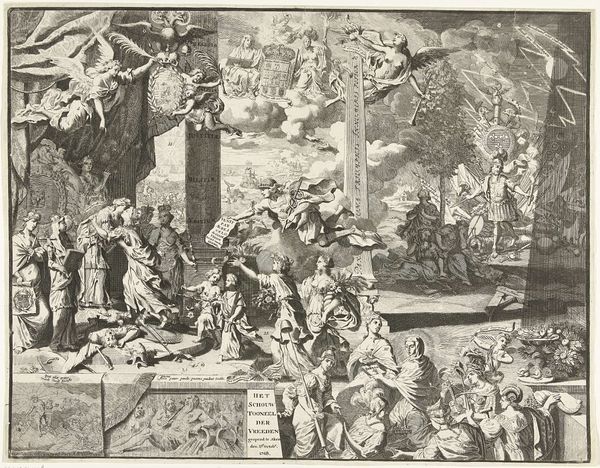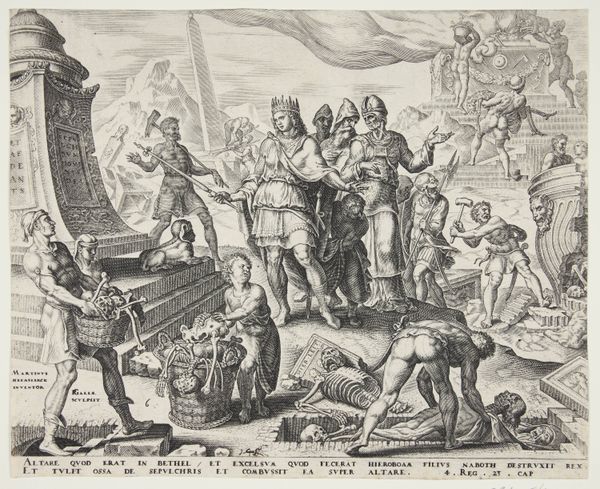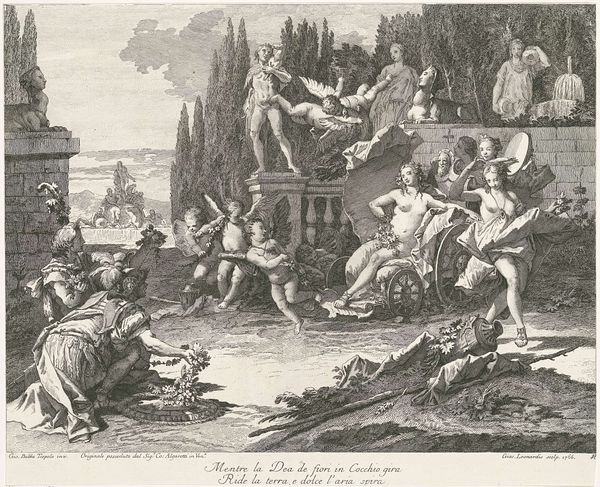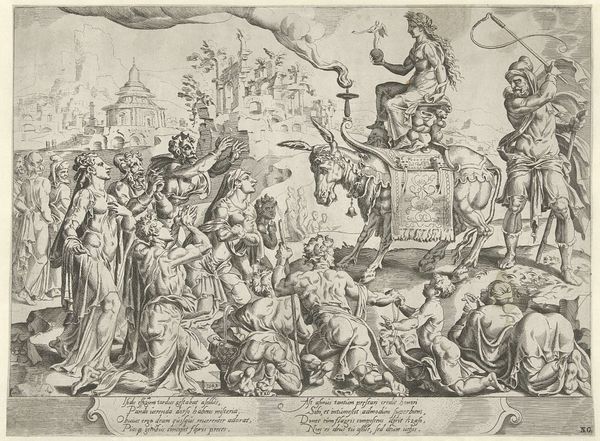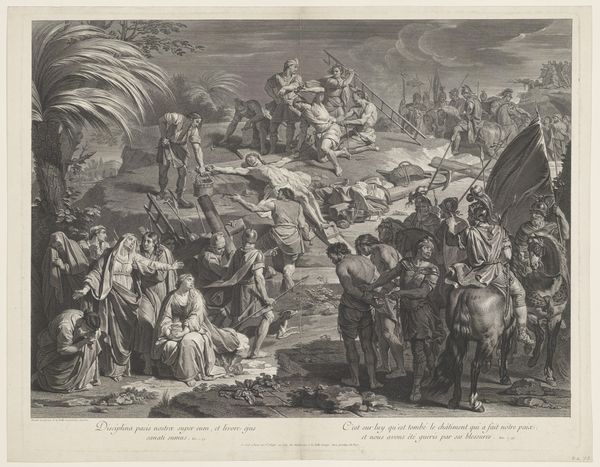
print, engraving
#
portrait
#
allegory
#
baroque
# print
#
figuration
#
history-painting
#
engraving
Dimensions: height 528 mm, width 702 mm
Copyright: Rijks Museum: Open Domain
Curator: Oh, what a wealth of detail in this print. It’s “Allegorische voorstelling met Ferdinand III (Duits keizer)”, created by Lucas Vorsterman I in 1633. Editor: It's overwhelming. A profusion of figures all fighting for space. I immediately think of the Baroque's fondness for density, for layered meanings pushing the eye this way and that. Curator: Exactly. Allegory was very important then, you see; almost a language. This represents the Emperor Ferdinand III and uses symbolic figures to celebrate him, and by extension, the Holy Roman Empire. Notice the figures representing virtues, prosperity and the arts, all attending to the emperor, signifying his just rule. Editor: There is the drama typical of Baroque composition, but it feels rigid to me, though it is only a print, of course, and not painting or sculpture. All those carefully rendered cherubs... the celestial scene in the upper portion of the image clashes in my eyes. What is its symbolism? Curator: Ah, the celestial imagery! See the divine figures riding the chariot – those would be symbolic of the divine right of the Emperor to rule, an idea extremely important to legitimate the power of royal lineages. Also look closer, and you'll see emblems of Imperial authority spread throughout the piece, intended to reassure people of stability, hierarchy. Editor: It’s almost propagandistic, if one weren’t too polite to say so. Vorsterman packs in every symbolic element imaginable to buttress the Emperor's authority. All elements contribute toward creating an idealized image, far from conveying something emotionally genuine, like a portrait meant to elicit human emotion from a viewer. Curator: I disagree. While undoubtedly celebrating the Emperor, I sense deeper anxiety underlying it. Those emblems of power had real-world consequence. The piece almost wills stability into being—stability and order the Empire may have deeply needed at the time. That reading imbues the piece with a palpable melancholy—far more moving than mere portraiture, even centuries later. Editor: Hmm, that is intriguing. Thinking about it more abstractly, all those receding planes and textures create a surface teeming with visual incident. Maybe it's more than a record; Vorsterman created something powerfully evocative, even at a distance of some four centuries. Curator: I'm so glad you noticed it. This print invites one to look—and look again. The symbolic language then mingles with human feeling to tell such complex stories.
Comments
No comments
Be the first to comment and join the conversation on the ultimate creative platform.
